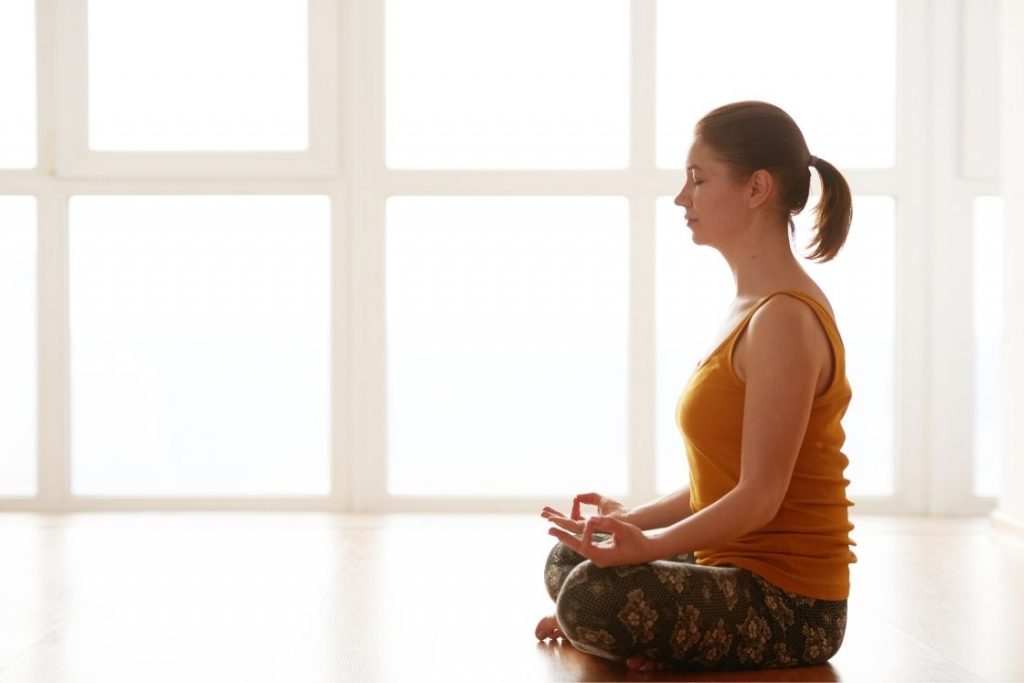
As per the yogic philosophy, our body is made up of 5 elements that also make up the whole universe. These 5 elements – space, air, fire, water, and earth – are also known as panch tattva or panchabhutus in yoga.
These tattvas, when in perfect balance, encourage your body to work in perfect harmony. When elements are balanced, your hormones are secreted in an adequate amount, your muscles and joints are in perfect health, your digestive system works efficiently and your mental health remains in top form as well.
However, if even one element goes out of balance, it can disrupt the working of the different body systems.
The good news is that you can maintain your optimum health and well-being by performing mudras regularly.
Mudras, specifically hasta or hand mudras, employ the use of fingers to activate the energy points and the 5 elements. When these mudras are held for some time duration, they channel energies associated with elements on the right path.
Numerous Buddhist and Hindu rites have included mudras in some manner. Yoga, meditation, and dancing all make great use of them. There are reportedly approximately 399 mudras used throughout many fields.
What is the best time to do mudra?
The best time to do yoga in general is morning. Traditionally, it is recommended to practice mudras in the early morning, preferably between 4 am to 6 am. This is the time when your body can assimilate the effects of the mudra and keep channelling the energy throughout the day.
In general, mudras can be performed at any time of the day or as per your convenience. All you need is 10-15 minutes to practice a specific mudra 2-3 times a day. Overall, a mudra should be performed for 40-45 minutes in a day to reap its benefits, unless specified otherwise.
Can we do multiple mudras in a day?
Depending on the context, two or more mudras can be applied sequentially. There are some mudras that can be performed whenever possible and for as long as necessary.
Others, however, ought to be done out only till your illnesses are resolved. To avoid inconsistency, it is necessary to verify the impacts of the mudras that are to be performed one after the other.
Additionally, there are time restrictions on how long some mudras can be performed which must also be taken into consideration. Always consult an expert on ‘how long a mudra should be held when you’re practising mudra for a severe health condition.
It should be simple to perform a few mudras one after another when these safety measures have been taken.
7 mudras for health and wellbeing
In yoga, a healthy body and mind are defined as balance among 5 elements of the body. So mudras good for overall health and wellbeing are the ones which work on ‘air, fire, earth, water and space’ element.
Keeping this in mind, let us have a look at some mudras that can be done every day for better health and wellness.
1. Gyan or Jnana Mudra
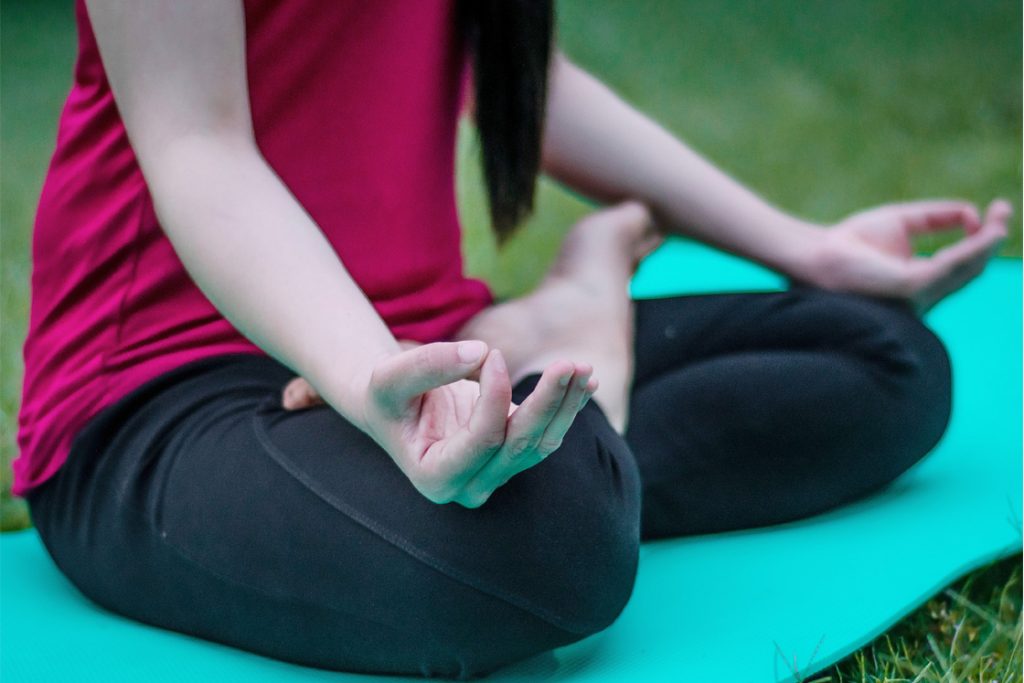
Gyan mudra is among the most foundational yoga mudras for improving focus and knowledge. It is frequently used during meditation and some breathing exercises. It is best performed early in the morning when your mind is clear.
Benefits
- Sharpens the mind
- Improves focus and memory
- Cures insomnia
- Relief from stress, anxiety, irritability, depression
- Stimulates the air element and improves the function of the pituitary gland and nervous system
- Improves breathing capacity.
- Aids in spiritual awakening
Steps to perform
- Sit in any comfortable meditative position.
- Bring your hands on your thighs or knees with palms facing up.
- Join the tip of the index finger and thumb and keep the other fingers extended.
- Close your eyes and hold the mudra for 10 minutes in one session.
2. Prana Mudra
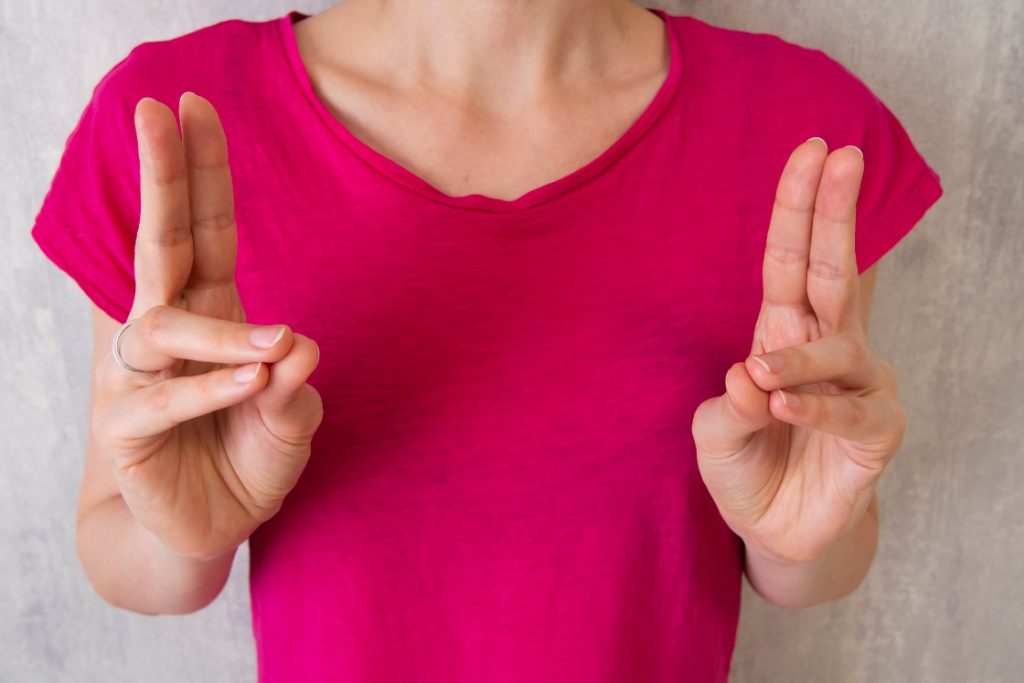
Prana mudra assists in bringing the body’s life force into balance. It enhances the flow of vital energy flow or prana and thus makes all the parts of the body function optimally.
Prana mudra is mostly done after any mudra practice to spread the effect of preceding mudra via the flow of prana. So in most mudras sequences, mostly the end practice of the sequence is prana mudra.
Benefits
- Improves eyesight
- Relief from tiredness and fatigue
- Reduces hunger pangs and sleeplessness
- Provides energy
- Boosts immune system
Steps to perform
- Sit in any comfortable meditative position.
- Bring your hands on your thighs or knees with palms facing up.
- Join the tips of the ring and little finger with the thumb and let the remaining fingers be kept straight.
- Close your eyes and relax in this pose for 10-15 minutes.
3. Vayu Mudra
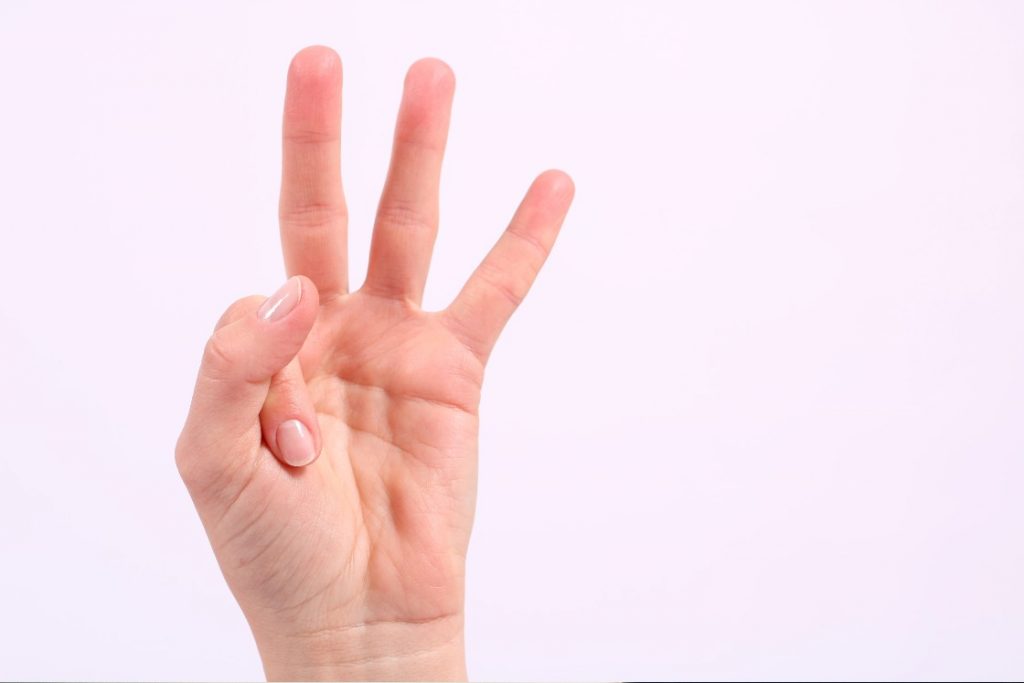
Vayu means ‘air’ in English, thus, vayu mudra balances the air element in the body. Your normal bodily functions, such as sneezing, blinking, and yawning, can be managed by vayu mudra. It eases any restrictions in the body brought on by too much air in the body, which is beneficial for Vata body types.
You can perform vayu mudra anytime and anywhere and you do not need to have an empty stomach to practice the mudra.
Benefits
- Controls nervousness and restlessness by calming the mind
- Can cure problems like gout, gas problems, knee pain, arthritis, sciatica, and bulging stomach
- Soothes a strained voice
- Decreases chest pain and rheumatic
- Reduces symptoms of ailments like arthritis, neck pain, trembling in Parkinson’s disease, paralysis, and cervical spondylitis.
Steps to perform
- Sit in any comfortable meditative position.
- Bring your hands on your thighs or knees with palms facing up.
- Bend your index finger such that the tip of the finger comes at the base of the thumb.
- Press the thumb on the middle of the bent finger with slight pressure. The remaining fingers should remain straight.
- Close your eyes and hold this mudra for 10-15 minutes.
Also read: Mudra for balancing vata, pitta and kapha dosha
4. Surya Mudra
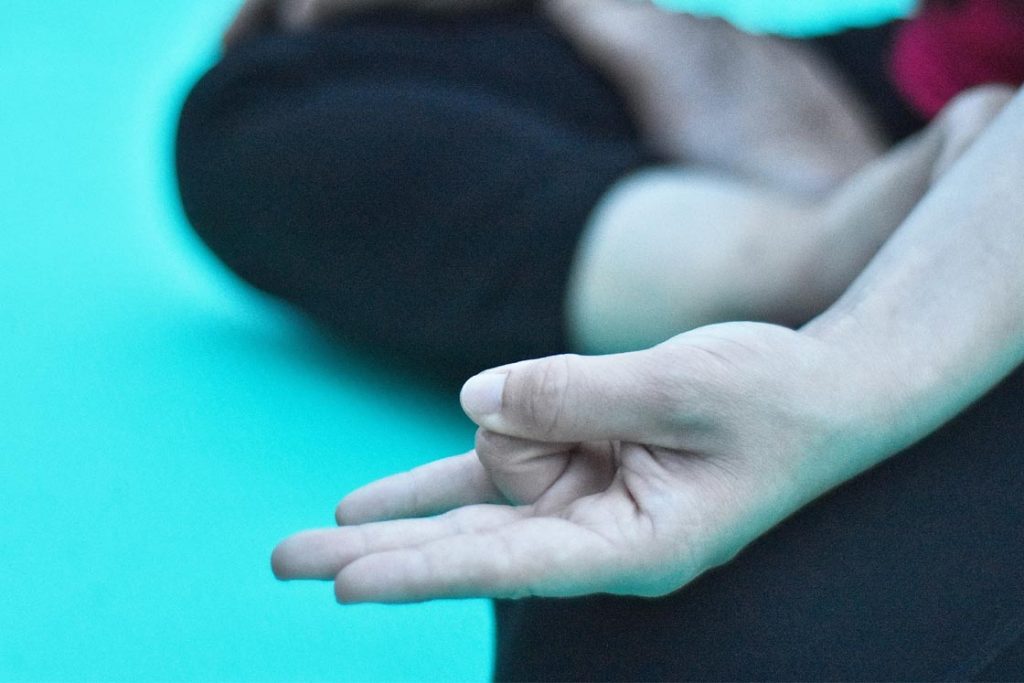
Surya mudra comes with considerable healing potential and is quite strong in terms of effect.
In surya mudra, the body’s earth element decreases as the body’s fire element increases. This mudra can be done first thing in the morning on an empty stomach. However, do not perform this at night as it can stimulate the fire element and chase away sleep.
Benefits
- Maintains body temperature
- Helps in losing weight
- Boosts metabolism
- Improves vision and provides glow to the skin
- Reduces coldness of hands, feet, and limbs
- Cures indigestion, acidity, and gas and enhances appetite
- Controls low BP, reduces cholesterol, and regulates the thyroid gland
Steps to perform
- Sit in any comfortable meditative position.
- Bring your hands on your thighs or knees with palms facing up.
- Bend your ring finger such that the tip of the finger comes at the base of the thumb.
- Press the thumb on the middle of the bent finger with slight pressure. The remaining fingers should remain straight.
- Close your eyes and hold this mudra for 10-15 minutes.
Also read: Ideal mudra to control high blood pressure
5. Varun Mudra
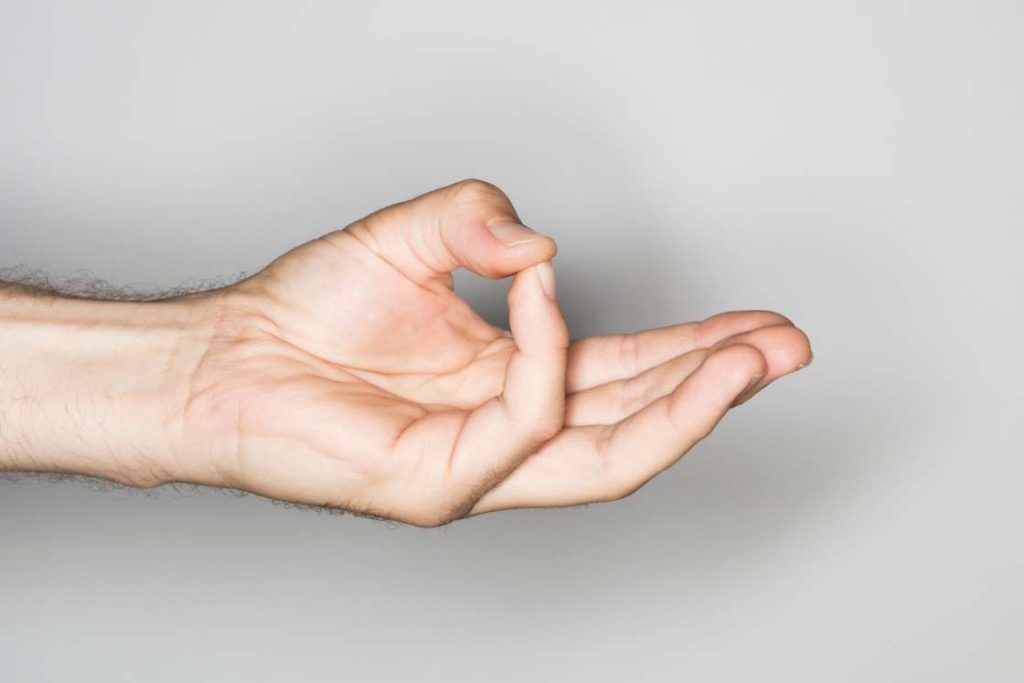
The Varun mudra assists in bringing your body’s water element into balance. All illnesses brought on by a lack of water or any other form of dryness are prevented by it. This is among the best mudras for external beauty and appearance. It can be performed at any time of the day.
Benefits
- Reduces skin dryness, improves skin softness and luster, and cures skin diseases.
- Enhances mental clarity
- Encourages communication and openness
- Keeps the body hydrated
- Increases blood circulation
- Relief from muscle aches
Steps to perform
- Sit in any comfortable meditative position.
- Bring your hands on your thighs or knees with palms facing up.
- Join the tip of the little finger with the thumb and let the remaining fingers be kept straight.
- Close your eyes and relax into this pose for 10-15 minutes.
6. Prithvi Mudra
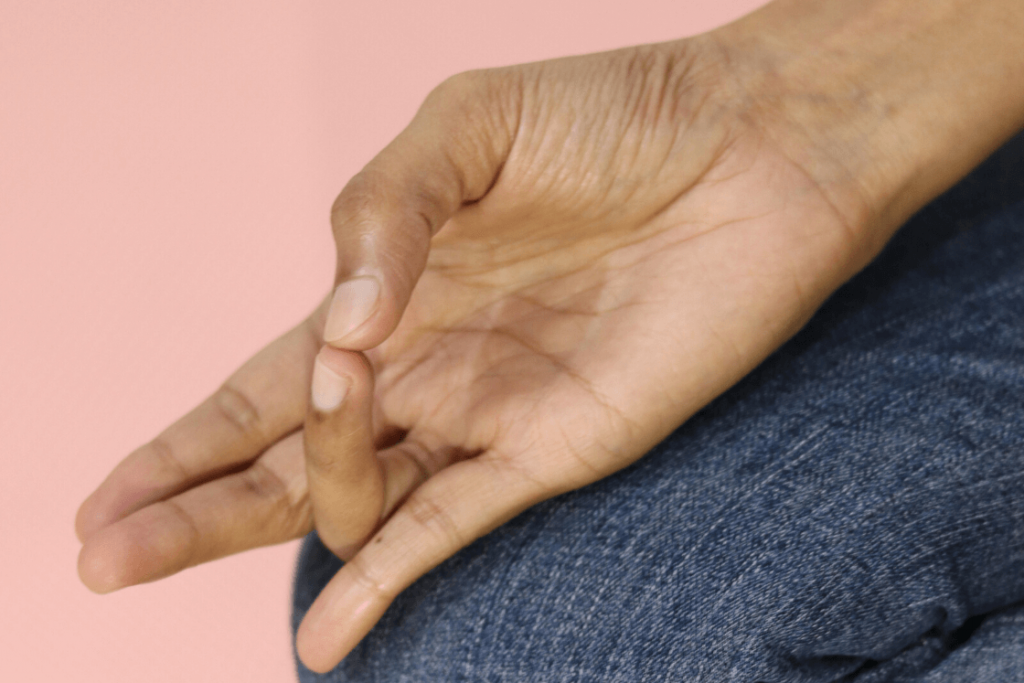
Bones, cartilage, skin, hair, nails, muscles, tendons, internal organs, and other body parts all depend on the earth element. The Prithvi Mudra is a prominent mudra for bringing earth energy into the body and building these basic human body structures.
It is best to perform this mudra during the morning. Performing this mudra whenever you feel tired or stressed will give renewed energy to the body.
Benefits
- Strengthens and invigorates bones, tissues, organs
- Increases blood circulation
- Enhances patience, tolerance, concentration, stability, confidence, and strength
- Increases body weight
- Reduces mental dullness, fatigue, exhaustion
- Provides a natural glow to the skin
- Removes deficiency of vitamins
Steps to perform
- Sit in any comfortable meditative position.
- Bring your hands on your thighs or knees with palms facing up.
- Join the tip of the ring finger with the thumb and let the remaining fingers be kept straight.
- Close your eyes and relax into this pose for 10-15 minutes.
7. Adi Mudra

Yoga practitioners also refer to this mudra as the Primal Gesture or the First Gesture. Its name comes from the hand position an unborn child assumes while still in the womb.
You can perform this mudra before starting any activity such as studying or tasks that require high intellectual and cognitive abilities.
Benefits
- Increases the function and vitality of your organs.
- Enhances motor skills
- Sharpens memory
- Calms your brain and reduces anxiety, panic, and stress.
- Improves blood circulation
- Stimulates endocrine glands
- Prevents snoring
Steps to perform
- Sit in any comfortable meditative position. Keep your hands on the lap.
- Bend your thumb and wrap your fingers around the thumb to form a fist.
- Place your fists, facing down, near the lower abdomen, and close your eyes.
- Stay in this position for 10-15 minutes.
Conclusion
Yoga mudras can be practiced at home or in retreat centers for meditation or yoga since they are excellent for self-growth. These mudras can also help us live joyful, stress-free lives when combined with breathing exercises and meditation. Utilize these yoga mudras as part of your routine to improve your overall health.

